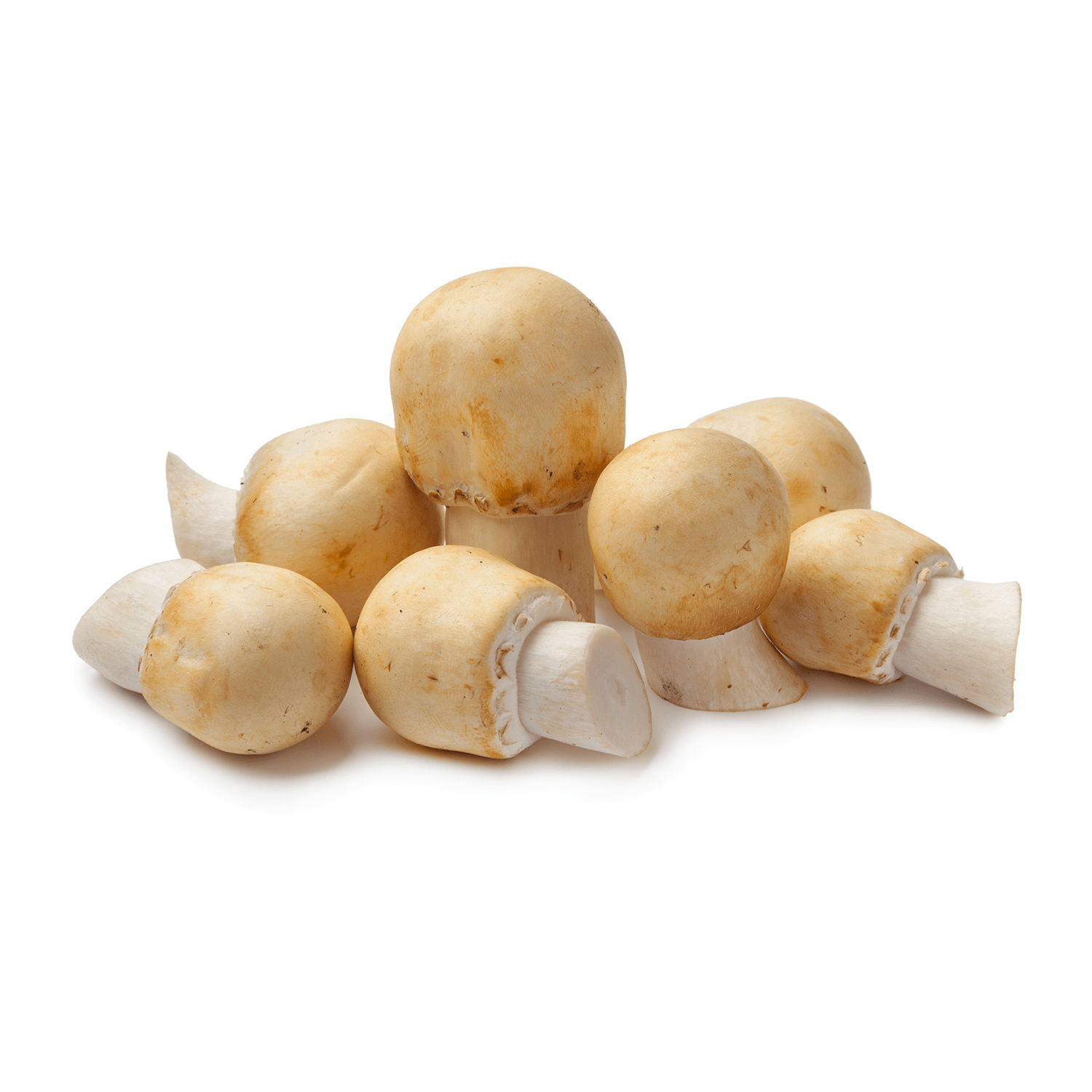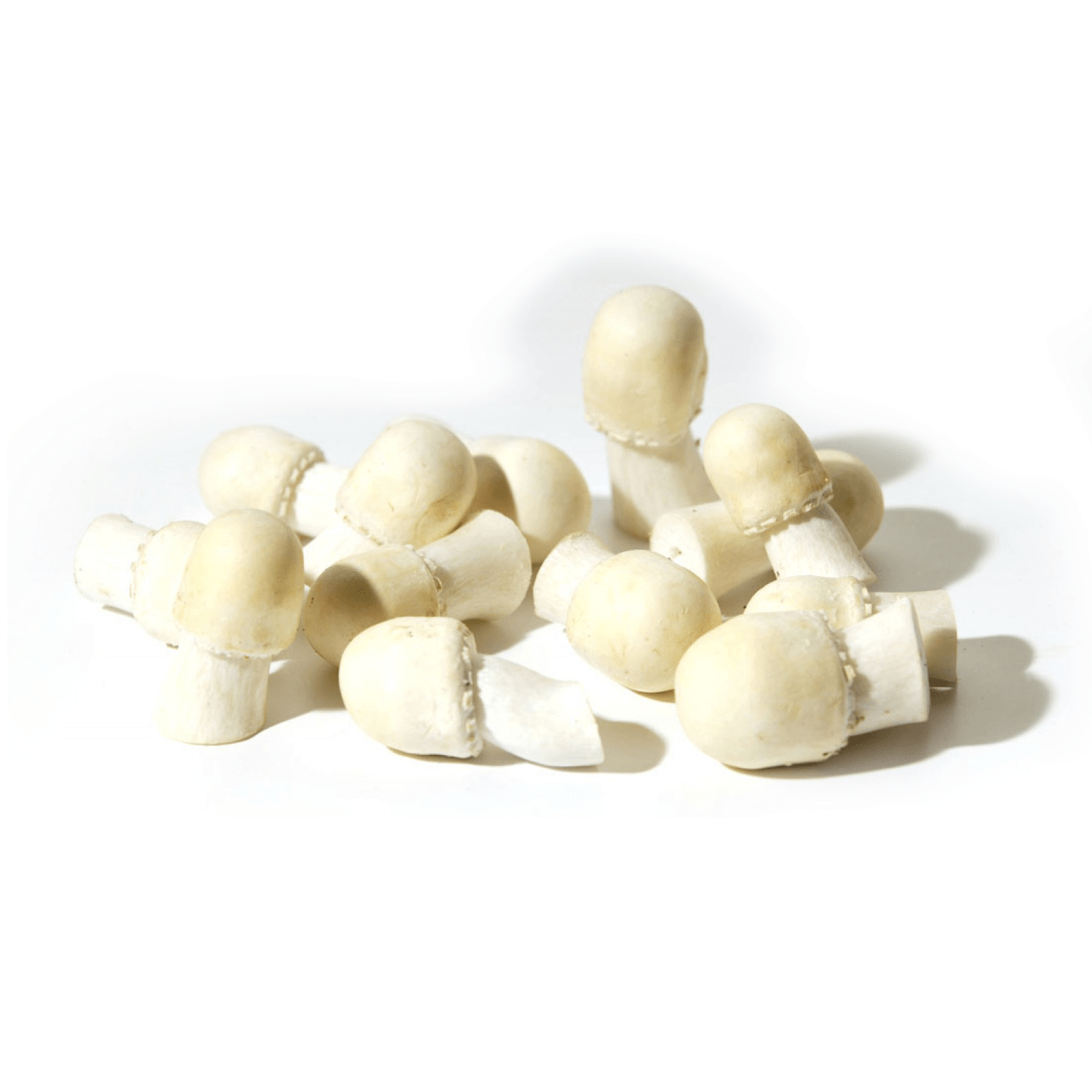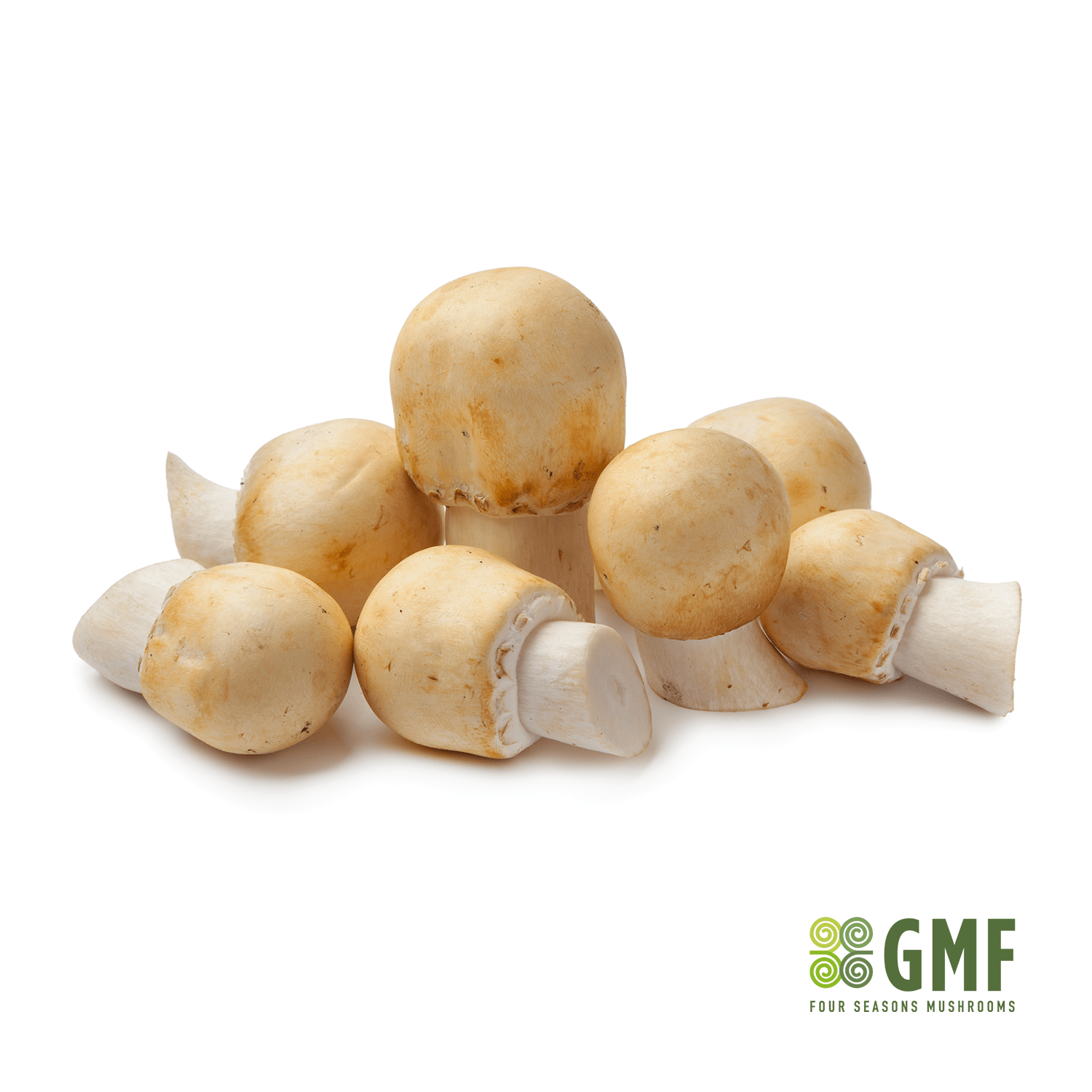field mushroom
Agaricus Arvensis
Field mushrooms vary in appearance and size, depending on ripeness. When young, the caps are smooth, cream to white, and are smaller with a rounder, bulbous shape. As the mushroom matures, the cap becomes flatter and wider, with an average diameter of 10 to 20 centimeters, and the surface takes on yellow undertones, sometimes with a scale-like texture. Under the cap the gills are free and full. They appear light pink at first and then turn dark brown, becoming darker over time. When the mushroom is young, a distinct gear pattern can be seen on the unopened veil, and as the mushroom matures, the veil runs down the sturdy stem, forming a small skirt. The stem can reach 4 to 10 centimeters high and is semi-thin, becoming hollow with age. Field mushrooms have thick, white flesh that becomes soft and slightly chewy when cooked and has a sweet, earthy and nutty flavor. The mushrooms also have a distinct aroma reminiscent of aniseed or bitter almonds.


PREPARATION
Field mushrooms are best suited for cooked uses such as sautéing, roasting or grilling. When the mushrooms are still young, they can be sliced into omelets, stirred into risotto, tossed into soups and stews, or lightly seasoned and fried as a simple side dish. They can also be cooked and served in salad greens with flavors that complement their aniseed scent. Ripe field mushrooms can be chopped up and added to pasta, chopped into sauces, placed on toast with eggs, or baked and served with roast meats. The large, ripe mushroom can also be used as a substitute for portobello mushrooms in recipes. Field mushrooms go well with lemon juice, sweet chervil, sorrel, parmesan cheese, garlic, onions, parsley, meats such as beef or poultry, olives and capers. The fresh mushrooms will keep for 2-3 days when stored whole and unwashed in a paper bag in the refrigerator.
Field mushrooms are an excellent source of vitamin D, a rare vitamin found in food that can help support healthy bones and nutrient absorption. The mushrooms also contain some potassium, iron, zinc and copper.
Other Names
- Ordinary Mushroom (English) Field Mushroom (English) Ackerpilz (German) Agaric des prés (French) Agaricus arvensis (Latin)
All Rights Reserved | Green Mushroom Farm B.V.








